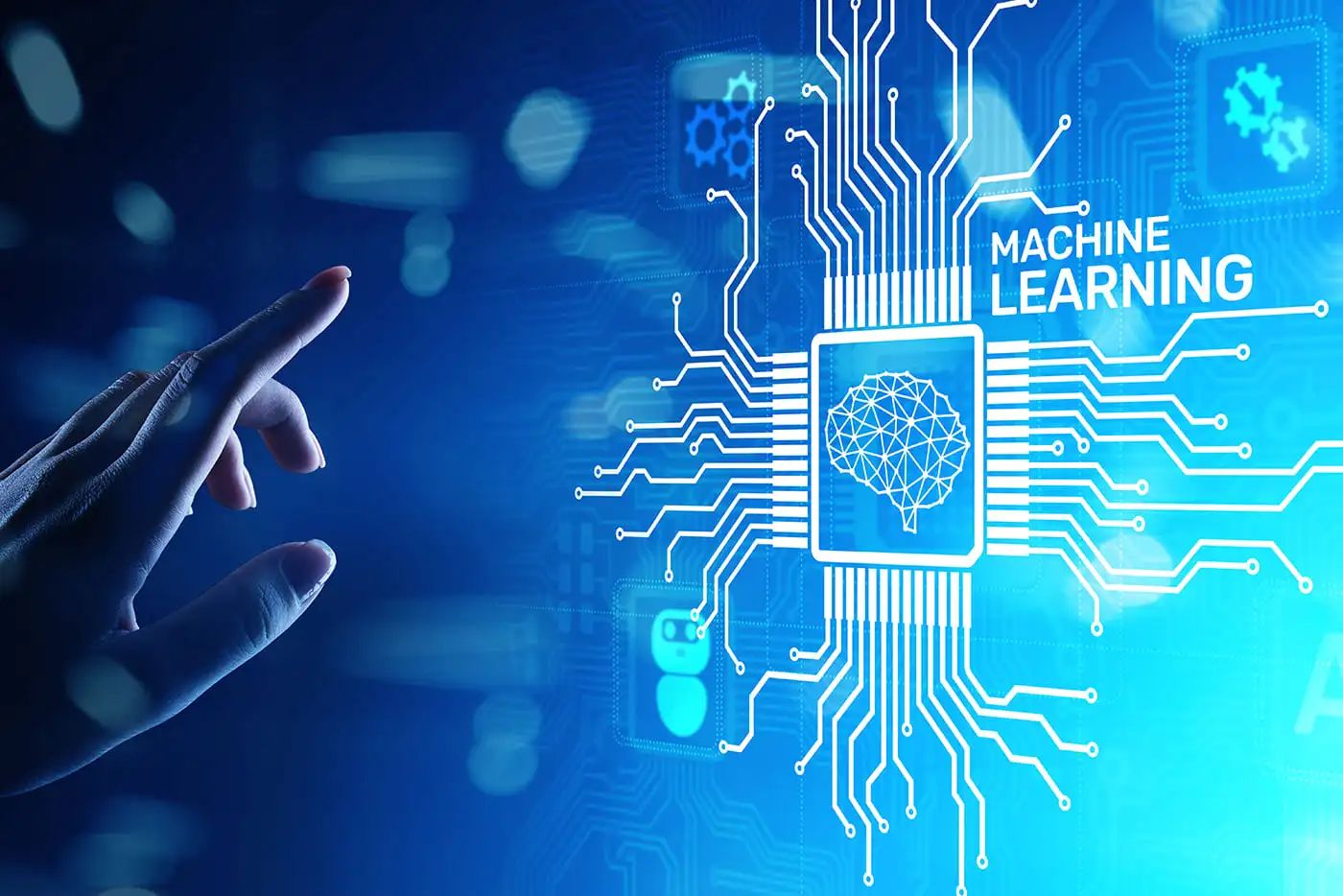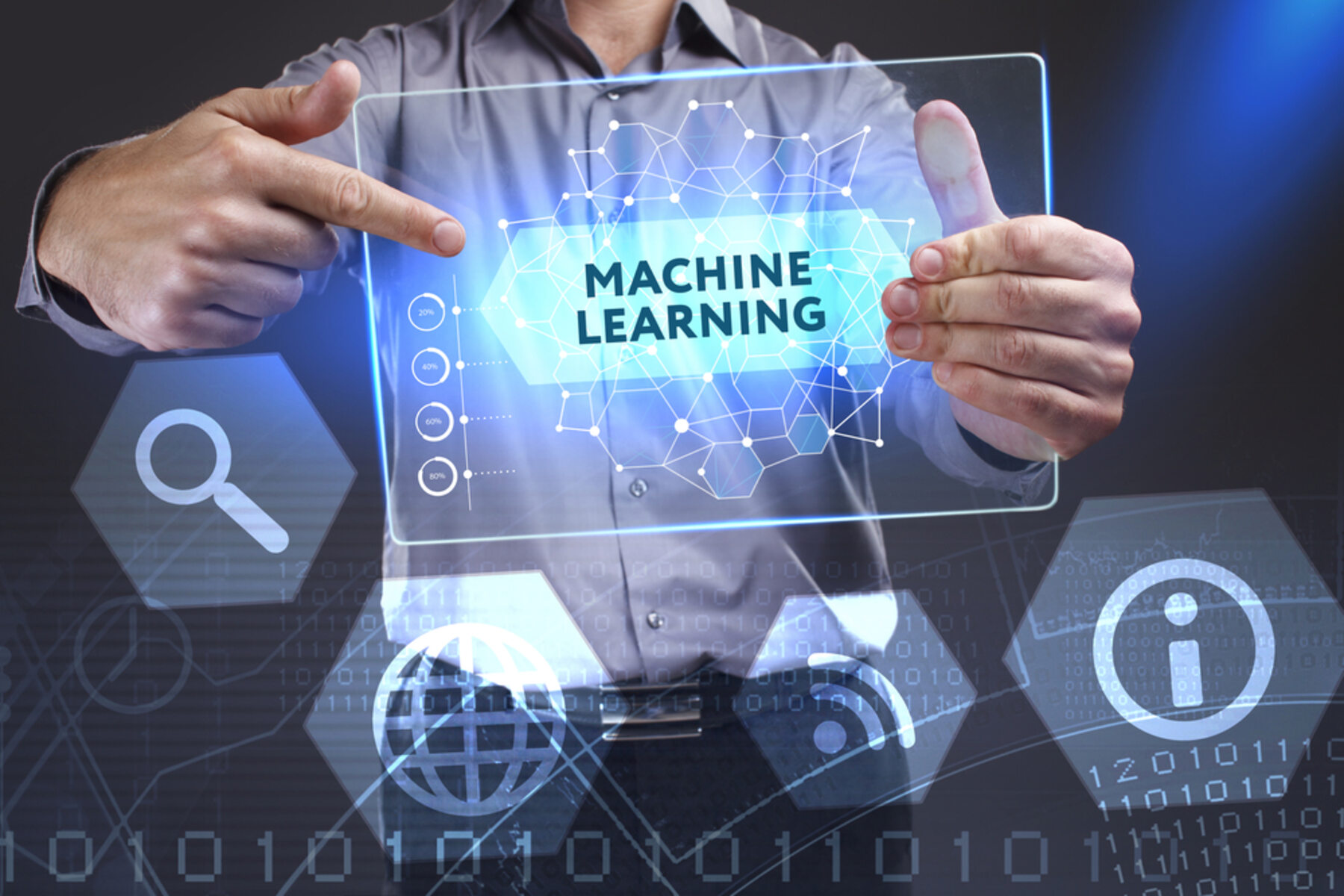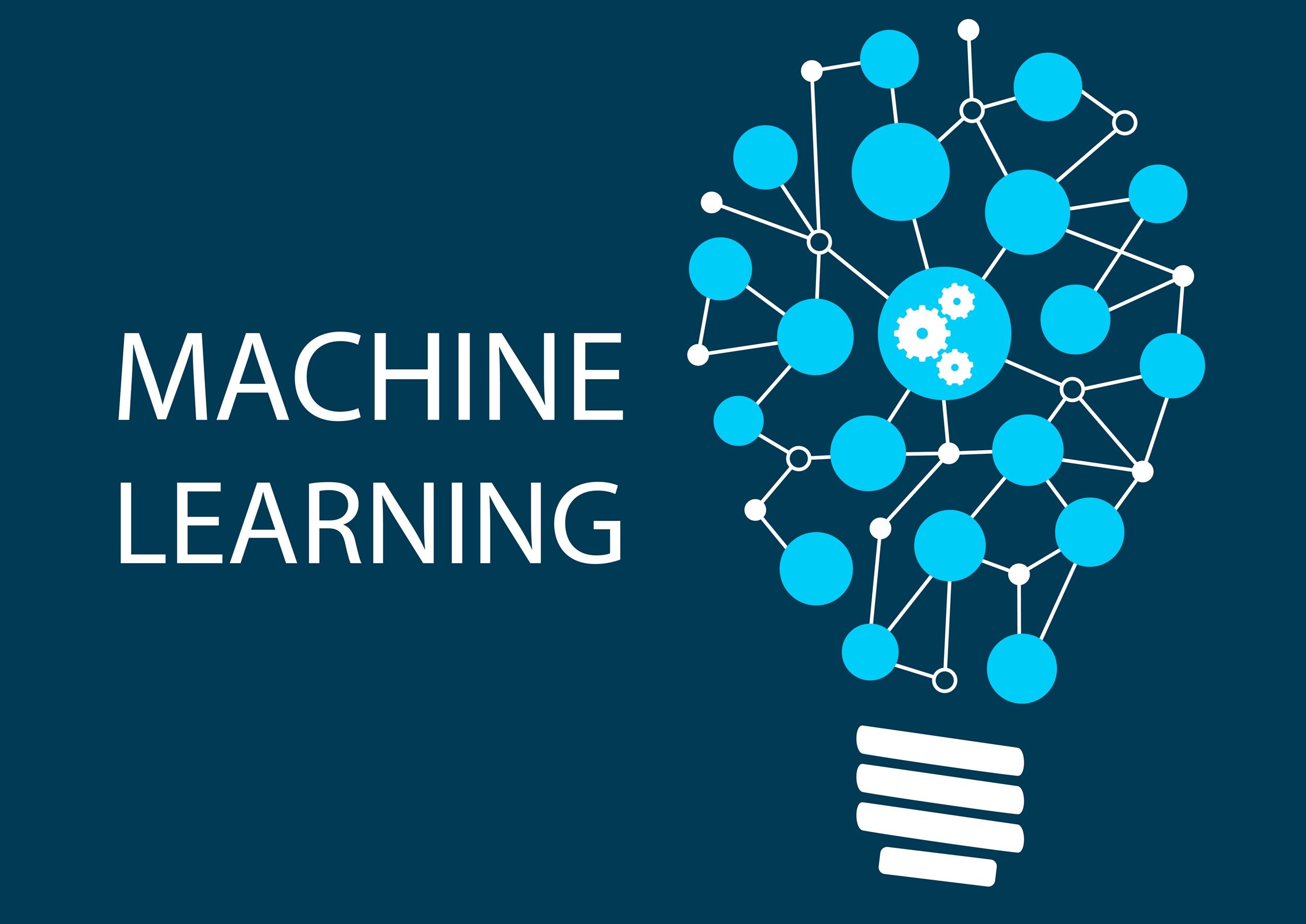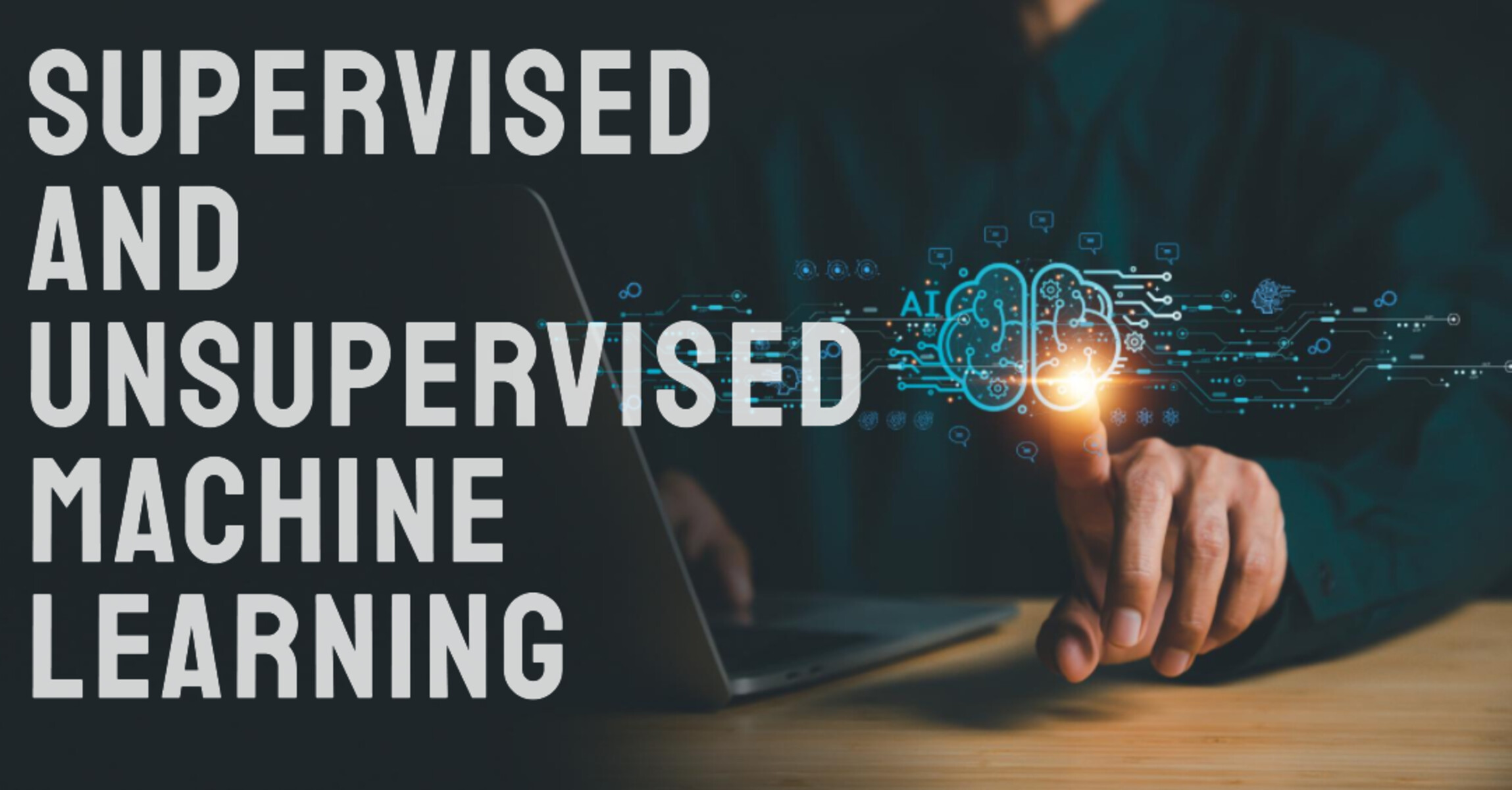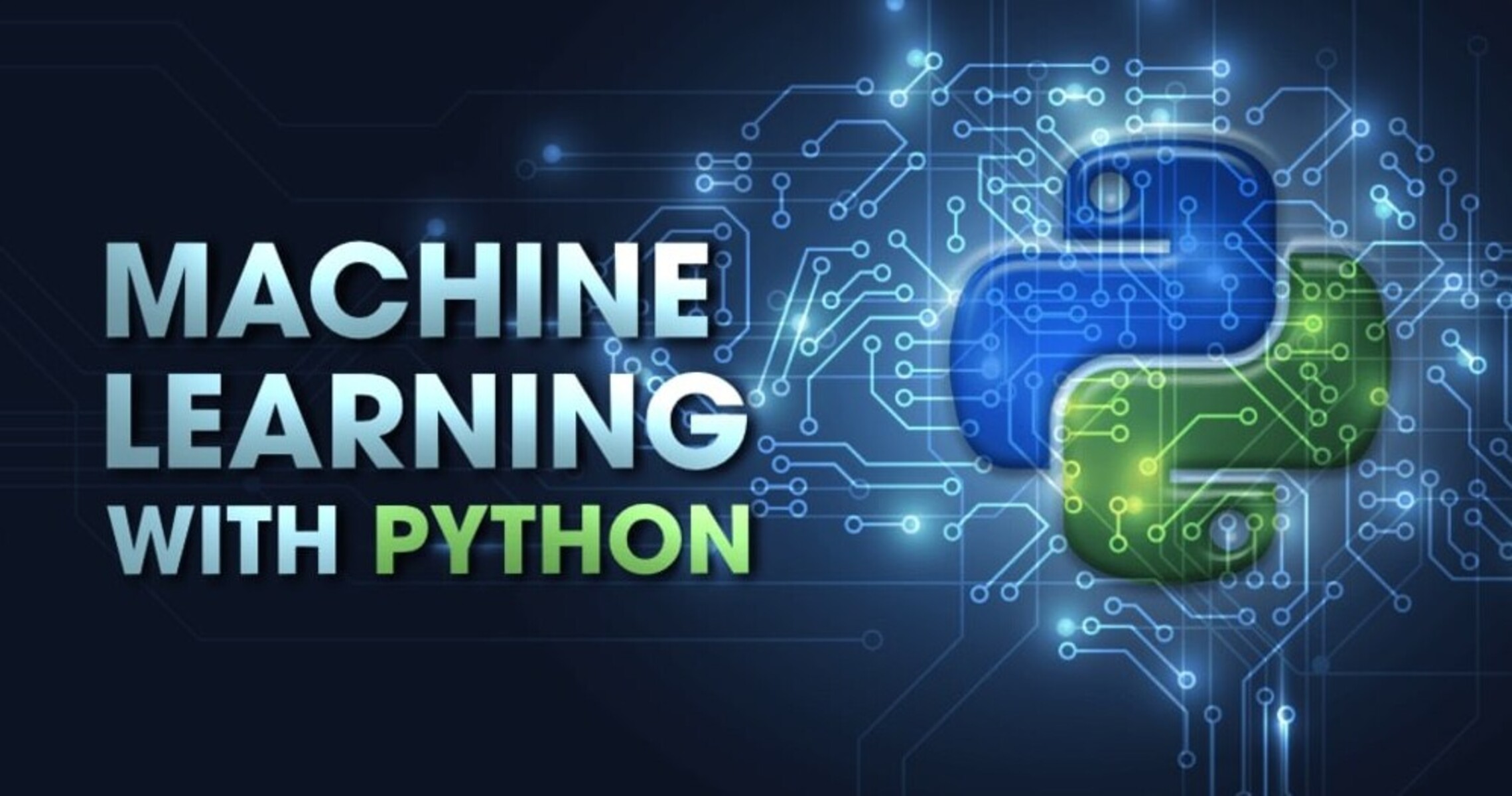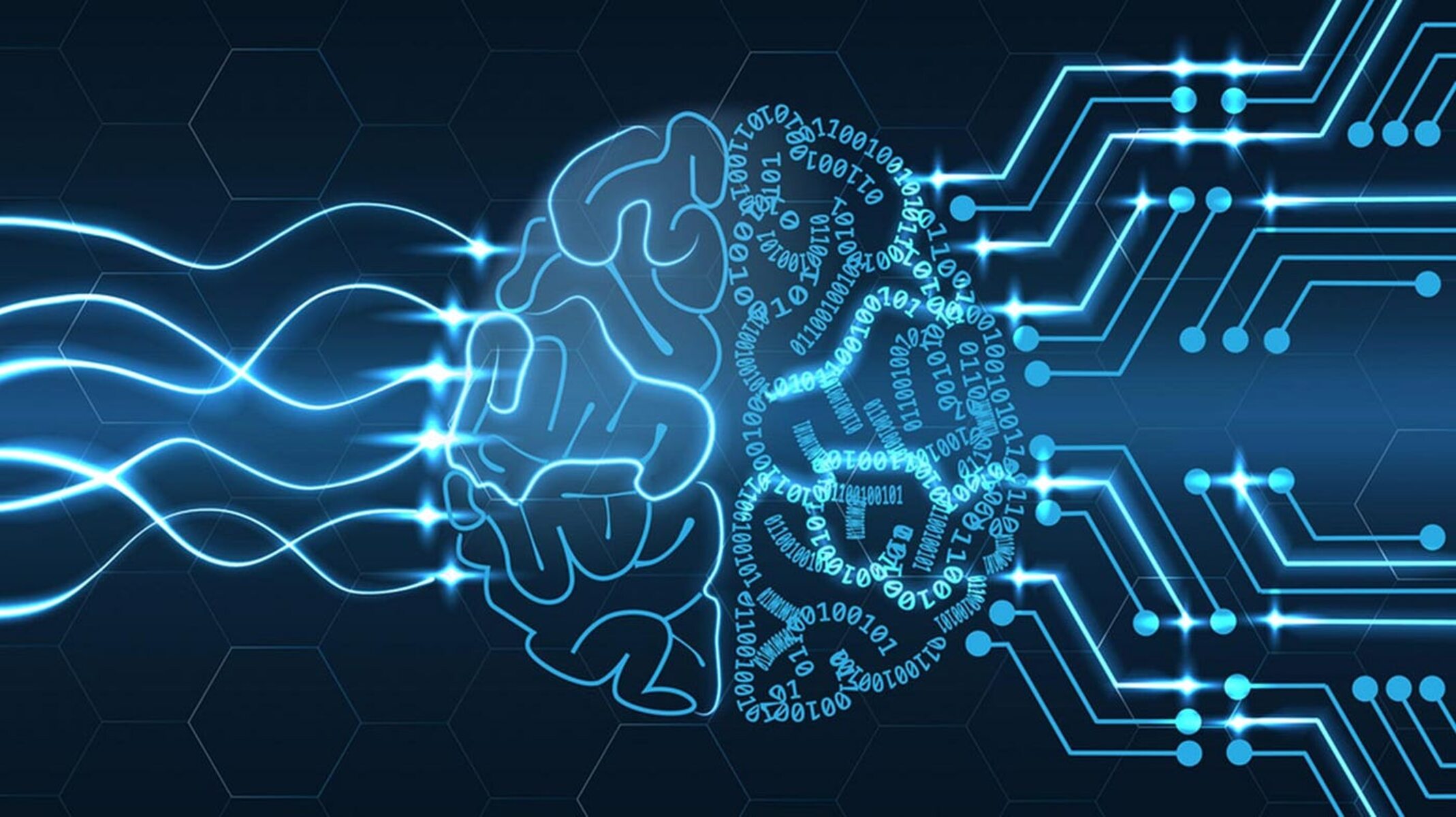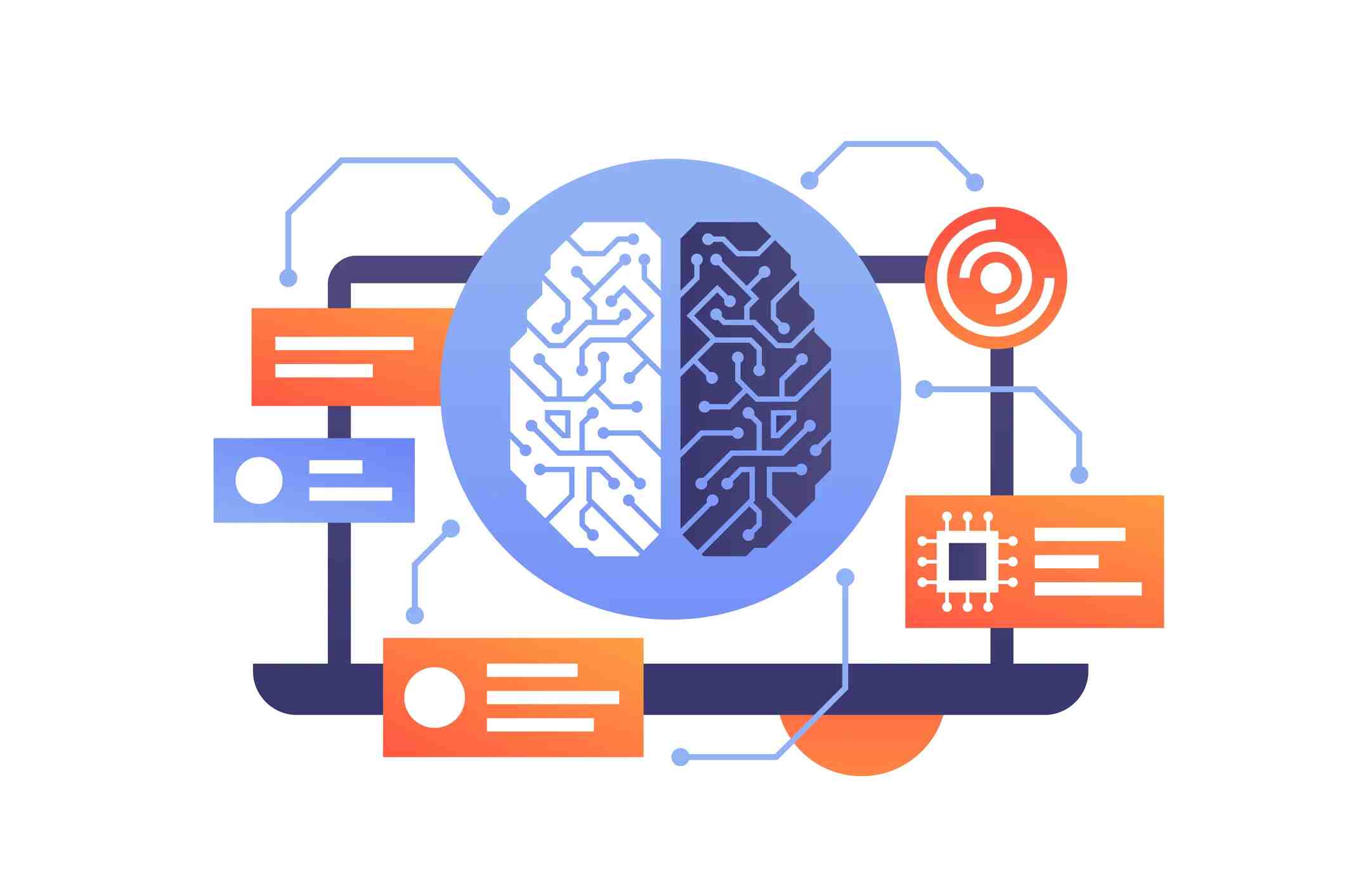Overview of Supervised Machine Learning
Supervised machine learning is a subfield of artificial intelligence that focuses on developing algorithms capable of learning from labeled training data to make predictions or classifications on unseen data. It involves creating models that can generalize patterns and relationships from the known inputs and outputs in the training data. These models are then used to predict or classify new, unseen data.
The key concept behind supervised learning is the availability of labeled data. In supervised learning, we have a dataset that consists of input (or feature) variables and corresponding output (or target) variables. The goal is to train a model by finding the optimal parameters that can map the input variables to the output variables accurately.
The process starts by dividing the training data into two parts: the features (or independent variables) and the target (or dependent variable). Then, based on the available data, a machine learning algorithm is selected and trained using the labeled examples. The algorithm learns to identify patterns and relationships in the data and creates a model that can predict the target variable for new instances.
Supervised learning algorithms can be classified into two categories: regression and classification. Regression algorithms are used when the output variable is continuous, such as predicting housing prices based on features like location, size, and number of rooms. On the other hand, classification algorithms are used when the output variable is categorical, such as classifying emails as spam or not spam based on their content.
The success of supervised machine learning depends on various factors, including the quality and quantity of the training data, the choice of the algorithm, and the features selected for training. Moreover, the performance of the model can be impacted by overfitting (when the model performs well on the training data but poorly on new data) or underfitting (when the model fails to capture the underlying patterns and relationships in the training data).
In the next sections, we will delve deeper into the role of training data, selecting the right algorithm, the training process, evaluating and selecting the best model, common challenges, and real-life applications of supervised machine learning.
What is Supervised Machine Learning?
Supervised machine learning is a subfield of artificial intelligence (AI) that involves training algorithms to learn patterns and make predictions or classifications based on labeled examples. In supervised learning, the machine learning model is provided with a dataset that consists of input variables (also known as features) and corresponding output variables (also known as labels or targets). The goal is to train a model that can accurately map the input variables to the output variables, allowing it to make predictions or classifications on new, unseen data.
The labeled examples in the training dataset are crucial for supervised learning. They provide the model with the ground truth information about the relationship between the input and output variables. By analyzing these labeled examples, the model can learn to identify patterns and generalize them to make predictions or classifications on unseen data.
Supervised learning algorithms can be broadly categorized into two types: regression and classification. In regression, the output variable is continuous, and the goal is to predict a numeric value. For example, predicting the price of a house based on its size, location, and other features is a regression task. In contrast, classification algorithms are used when the output variable is categorical, and the goal is to assign new instances to predefined categories. For instance, classifying emails as either spam or not spam is a common classification problem.
To train a supervised learning model, the dataset is typically split into two sets: a training set and a testing set. The training set is used to train the model by adjusting its parameters based on the labeled examples. The testing set, which contains unseen data, is used to evaluate the performance of the trained model. This allows us to assess how well the model generalizes to new instances and helps us make predictions or classifications accurately.
Supervised machine learning has a wide range of applications across various industries. It is used in healthcare to predict disease outcomes and diagnose medical conditions based on patient data. In finance, supervised learning algorithms are employed to detect fraudulent transactions and predict stock market trends. Additionally, it is utilized in recommendation systems to personalize product recommendations for online shoppers.
In summary, supervised machine learning involves training algorithms to learn patterns from labeled examples and make predictions or classifications on unseen data. By providing the algorithm with sufficient training data and choosing the appropriate supervised learning algorithm, we can develop accurate models for various real-world applications.
The Role of Training Data
Training data plays a crucial role in supervised machine learning. It serves as the foundation for training the model and allows it to learn patterns and relationships between the input variables and the corresponding output variables. The quality and quantity of the training data directly impact the performance and accuracy of the trained model.
The training data consists of a set of labeled examples, where each example includes the input variables and the corresponding output variables. These labeled examples provide the model with the ground truth information, allowing it to understand the relationship between the inputs and outputs. By analyzing the patterns and correlations within the training data, the model can generalize the knowledge and make predictions or classifications on new, unseen data.
When constructing the training dataset, it is essential to ensure that it is representative of the problem space. The dataset should cover a wide range of possible scenarios and include various combinations of input variables and corresponding output variables. By including diverse examples in the training data, we can prevent bias and improve the model’s ability to handle different situations.
The size of the training data also plays a crucial role. In general, more data leads to better model performance, as it provides a larger and more comprehensive set of examples for the model to learn from. However, the quality of the data is equally important. It is better to have a smaller dataset with high-quality and accurate labeling than a larger dataset with potential errors or inconsistencies.
Collecting and labeling training data can be a time-consuming process. In some cases, it may be necessary to manually label the examples, which requires human expertise and effort. Alternatively, existing datasets may be available for specific domains, and data augmentation techniques can be used to generate additional labeled examples.
It is also important to continuously evaluate and refine the training data. As the model learns and makes predictions or classifications, the feedback from real-world data can be used to improve the accuracy and relevance of the training dataset. This feedback loop helps to identify potential issues or biases and allows for the iteration and improvement of the model’s performance.
In summary, training data forms the backbone of supervised machine learning. It provides the labeled examples that enable the model to learn and generalize patterns, allowing it to make accurate predictions or classifications on unseen data. A carefully curated and diverse training dataset, along with continuous evaluation and refinement, is essential for developing effective supervised learning models.
Choosing the Right Algorithm for Supervised Learning
Choosing the right algorithm for supervised learning is a critical step in developing an effective machine learning model. The algorithm acts as the engine that processes the training data, learns patterns, and makes predictions or classifications. The selection of the algorithm depends on various factors, including the type of problem, the nature of the data, and the desired performance metrics.
In supervised learning, different algorithms are suitable for different types of tasks. The choice between regression and classification algorithms depends on whether the output variable is continuous or categorical, respectively. Regression algorithms, such as linear regression or decision trees, are used when predicting numeric values. Classification algorithms, such as logistic regression or support vector machines, are used when classifying instances into predefined categories.
When selecting an algorithm, it is crucial to consider the specific characteristics of the dataset. Some algorithms are more effective for linear relationships, while others excel in handling nonlinear or complex patterns. For example, decision trees are known for their ability to handle nonlinear relationships, while support vector machines are effective in handling high-dimensional data.
Additionally, the size of the dataset and the computational resources available should be taken into account. Some algorithms, such as k-nearest neighbors or naive Bayes, are computationally efficient and perform well with small to medium-sized datasets. On the other hand, algorithms like deep neural networks or random forests may require more computational resources and are well-suited for larger datasets.
The interpretability of the algorithm is another factor to consider. Some algorithms, such as decision trees or logistic regression, provide a clear representation of the decision-making process. This interpretability can be crucial in certain applications, such as healthcare, where understanding the factors influencing a prediction is essential. However, more complex algorithms like deep learning neural networks may provide higher accuracy but lack interpretability.
It’s also important to consider the performance metrics that are relevant to the problem at hand. Accuracy, precision, recall, or F1 score are commonly used in classification tasks, while mean squared error or R-squared are common metrics for regression tasks. Understanding the performance requirements and choosing an algorithm that maximizes the desired metrics is crucial for developing a successful supervised learning model.
Finally, it’s important to note that there is no one-size-fits-all algorithm for supervised learning. The best approach is often determined through experimentation and evaluation. It may be beneficial to try out multiple algorithms and assess their performance using cross-validation techniques to find the most suitable algorithm for the specific problem and dataset.
In summary, selecting the right algorithm is a crucial step in supervised learning. Factors such as the type of problem, characteristics of the dataset, computational resources, interpretability, and performance metrics all play a role in determining the most suitable algorithm. It requires careful consideration and experimentation to identify the algorithm that will yield the most accurate and reliable predictions or classifications.
The Training Process
The training process is a crucial step in supervised machine learning. It involves feeding the training data to the selected algorithm and fine-tuning the model’s parameters to learn and generalize from the labeled examples. The training process aims to optimize the model’s performance and improve its ability to make accurate predictions or classifications on new, unseen data.
The training process starts by dividing the labeled training dataset into two parts: the features (or independent variables) and the target (or dependent variable). The features are the input variables, while the target variable is the output or label that the model aims to predict or classify. The dataset is further split into a training set and a validation set (or sometimes referred to as the development set), which helps assess the model’s performance during training.
When training a supervised learning model, the algorithm adjusts its internal parameters by iteratively comparing the predicted output with the actual target value. The algorithm updates its parameters based on the differences (also known as the error or loss) between the predicted output and the true output. This process is known as optimization or learning.
The optimization process typically involves an optimization algorithm, such as gradient descent, which searches for the optimal set of parameters that minimizes the error or loss function. The error function quantifies how far off the model’s predictions are from the actual values. Different algorithms and loss functions are used depending on the nature of the problem and the algorithm being employed.
During the training process, the model learns the underlying patterns and relationships in the training data. It adjusts its parameters to minimize the error, making incremental improvements in its predictive abilities. The number of training iterations or epochs can vary depending on the complexity of the problem and the convergence of the model’s performance.
To prevent the model from memorizing the training data (known as overfitting), regularization techniques can be employed. Regularization helps penalize complex models and encourages simplicity, reducing the risk of overfitting and improving the model’s generalization to unseen data.
Monitoring the training process is essential to ensure the model’s progress and identify potential issues. This involves tracking performance metrics on the validation set, such as accuracy, precision, recall, or loss function values, to determine if the model is improving or if adjustments need to be made. If the model’s performance plateaus or begins degrading, it may be necessary to modify the hyperparameters, such as learning rate or regularization strength, to optimize the model further.
Once the training process is complete, the trained model is ready to make predictions or classifications on new, unseen data. The model’s performance should be evaluated using the testing dataset, which was set aside during the model development process. This evaluation provides an unbiased assessment of the model’s ability to generalize and makes accurate predictions or classifications on real-world data.
In summary, the training process is a fundamental step in supervised machine learning. It involves feeding the labeled training data to the algorithm, adjusting the model’s parameters based on the error or loss function, and fine-tuning the model to make accurate predictions or classifications. Regularization and monitoring are essential to prevent overfitting and optimize the model’s performance. Once trained, the model can be applied to new data, providing valuable insights and contributing to various real-world applications.
Evaluating and Selecting the Best Model
Evaluating and selecting the best model is a critical step in supervised machine learning. The goal is to assess the performance of different models trained on the same data and identify the one that performs the best on unseen data. This process involves comparing various evaluation metrics and considering factors such as accuracy, precision, recall, F1 score, and computational efficiency.
One commonly used approach for evaluating models is cross-validation. Cross-validation involves dividing the labeled training data into multiple subsets, or folds. The model is trained on a subset of the data and evaluated on the remaining fold. This process is repeated multiple times, with different subsets used for training and evaluation. The average performance across all folds provides a more reliable estimate of the model’s performance on unseen data.
Several evaluation metrics can be used to assess model performance, depending on the nature of the problem. Accuracy, which measures the overall correctness of the model’s predictions, is a commonly used metric for classification tasks. Precision, recall, and the F1 score are useful for evaluating the performance of the model in correctly predicting positive instances, detecting true positives, and achieving a balance between precision and recall.
In addition to evaluation metrics, it is important to consider other factors when selecting the best model. These factors may include computational efficiency, interpretability, scalability, and domain-specific requirements. For example, in some applications, a simple and interpretable model may be preferred over a complex, but less interpretable one.
Another consideration is the generalization ability of the model. While a model may perform well on the training data, it is essential to evaluate its performance on unseen data to ensure that it can make accurate predictions or classifications in real-world scenarios. The performance on the testing dataset can provide a more objective evaluation of the model’s generalization ability.
It is important to note that the evaluation and selection process may involve trying out different algorithms and adjusting hyperparameters to optimize the model’s performance. Hyperparameters are parameters that are set before the training process and can influence the model’s behavior. Examples of hyperparameters include learning rate, regularization strength, and the number of hidden layers in a neural network. Tuning these hyperparameters is crucial to find the optimal configuration that maximizes model performance.
Some additional techniques, such as ensemble learning, can also improve the model’s performance. Ensemble methods combine the predictions of multiple models to obtain a more accurate and robust prediction. Techniques like bagging, boosting, and random forests leverage the diversity of multiple models to enhance predictive performance.
In summary, evaluating and selecting the best model requires careful analysis of performance metrics, consideration of other factors such as interpretability and computational efficiency, and validation on unseen data. Techniques like cross-validation and ensemble learning can assist in this process. By finding the model that performs best on unseen data, we can develop reliable and accurate models for various supervised learning tasks.
Common Challenges in Supervised Machine Learning
Supervised machine learning, while powerful and widely used, comes with its own set of challenges that can impact the performance and reliability of the models. Understanding and addressing these challenges is crucial for developing effective supervised learning systems. Here are some common challenges faced in supervised machine learning:
1. Insufficient and biased data: The quality and quantity of training data play a vital role in model performance. Insufficient data can lead to overfitting or underfitting of the model, where it either fails to generalize or poorly captures the underlying patterns. Biased data, where certain classes or instances are overrepresented or underrepresented, can result in biased predictions and inaccurate models.
2. Noisy data and outliers: In real-world datasets, noise and outliers are often present. Noise refers to random errors or inconsistencies in the data, while outliers are extreme values that deviate significantly from the normal pattern. Both noise and outliers can interfere with the learning process and negatively impact model performance. Robust preprocessing techniques, such as data cleaning and outlier detection, are required to handle these challenges effectively.
3. Feature selection and engineering: Choosing relevant features from the available data is a vital step in building predictive models. In some cases, data may contain irrelevant or redundant features that can confuse the learning algorithm and introduce unnecessary complexity. Feature engineering, which involves transforming or creating new features, can greatly enhance the model’s performance by capturing the relevant information and relationships in the data.
4. Overfitting and underfitting: Overfitting occurs when a model learns the training data too well and fails to generalize to new, unseen data. This can happen when the model becomes overly complex or the training data is limited. Underfitting, on the other hand, occurs when the model is too simple to capture the underlying patterns in the data. Techniques like regularization, cross-validation, and ensemble learning can help address these challenges.
5. Imbalanced classes: Imbalance in the distribution of classes, where one class is significantly more prevalent than the others, can lead to biased models with poor predictive performance. This is commonly encountered in fraud detection, disease diagnosis, or rare event prediction. Techniques like oversampling, undersampling, or using appropriate evaluation metrics can help mitigate the impact of imbalanced class distributions.
6. Generalization and unseen data: One of the primary goals of supervised learning is to develop models that can make accurate predictions on new, unseen data. However, model performance on the training data may not directly translate to generalization to unseen data. Evaluating the model on a separate testing dataset and employing techniques like cross-validation helps assess how well the model will perform in real-world scenarios.
7. Computational complexity: Some algorithms, such as deep learning neural networks or ensemble methods, can be computationally intensive and require significant computational resources or time to train. Choosing the right algorithm and considering the available computational capacity is important to avoid performance bottlenecks.
Addressing these challenges requires a combination of domain knowledge, preprocessing techniques, feature selection, algorithm selection, hyperparameter tuning, and good experimental practices. By being aware of these challenges and taking appropriate measures, supervised machine learning models can be developed and optimized to achieve high accuracy and reliability in various real-world applications.
Applications of Supervised Learning in Real Life
Supervised learning has a wide range of applications in various industries, making a significant impact on our daily lives. From healthcare to finance and marketing to transportation, supervised learning has revolutionized many domains by enabling accurate predictions and classifications. Here are some notable applications of supervised learning in real life:
1. Healthcare: Supervised learning has numerous applications in healthcare, including disease diagnosis, patient risk stratification, and treatment prediction. Machine learning models can analyze patient data, such as medical records, genetic information, and symptoms, to predict disease outcomes, detect anomalies, and recommend personalized treatment plans.
2. Finance: In the financial industry, supervised learning techniques are used for credit scoring, fraud detection, and stock price prediction. By analyzing historical transaction data, machine learning models can identify patterns of fraudulent behavior and flag suspicious transactions. They can also predict stock market trends and assist in making informed investment decisions.
3. Marketing and Customer Relationship Management (CRM): Companies use supervised learning to analyze customer data and develop personalized marketing campaigns. By understanding customer behavior, preferences, and purchase history, machine learning models can target specific customer segments with tailored advertisements and recommendations, enhancing customer satisfaction and increasing sales.
4. Natural Language Processing (NLP): NLP applications, such as sentiment analysis and text classification, heavily rely on supervised learning techniques. Machine learning models can analyze text data from social media, customer reviews, or news articles and determine sentiments, categorize documents, or extract important information, enabling businesses to gain insights from massive amounts of textual data.
5. Autonomous Vehicles: Supervised learning plays a significant role in developing self-driving cars and autonomous vehicles. Machine learning models are trained on large datasets of sensor data, including images, lidar scans, and radar readings, to identify objects, detect obstacles, and make real-time decisions for safe navigation on roads.
6. Image and Speech Recognition: Image and speech recognition systems heavily rely on supervised learning algorithms. Machine learning models can learn from large labeled datasets to accurately identify objects, recognize faces, transcribe speech, and even generate human-like voices. These technologies are used in various applications, including security systems, virtual assistants, and medical imaging analysis.
7. Recommender Systems: Online platforms, such as e-commerce websites and streaming services, leverage supervised learning to develop sophisticated recommender systems. By analyzing user behavior, purchase history, and preferences, machine learning models can generate personalized recommendations, improving user engagement and satisfaction.
These are just a few examples; supervised learning finds applications in many other areas, including energy management, agriculture, weather forecasting, and quality control. The ability to make accurate predictions and classifications based on historical and real-time data has transformed many industries and continues to drive innovation in our modern world.
Limitations and Ethical Considerations in Supervised Machine Learning
While supervised machine learning has shown remarkable advancements and capabilities, it also faces certain limitations and ethical considerations that should not be overlooked. Understanding these limitations and adhering to ethical principles is crucial to ensure responsible and unbiased use of supervised learning technologies. Here are some important limitations and ethical considerations to take into account:
1. Data bias and fairness: Supervised learning models heavily rely on the training data, and if the data contains biases, the model’s predictions can be skewed or discriminatory. Biases in the data can perpetuate and amplify existing societal biases, leading to unfair decision-making and discriminatory outcomes. It is essential to actively address and mitigate biases in the training data to ensure fair and unbiased predictions and classifications.
2. Generalization to new and unseen data: While supervised models can perform well on known data, their performance on new, unseen data may vary. Models may face difficulties in generalizing to real-life scenarios that differ from the training data. Evaluating models on representative and diverse datasets is vital to assess their generalization capabilities and ensure reliable performance in real-world applications.
3. Lack of transparency and interpretability: Some supervised learning models, such as deep neural networks, are notoriously known for their lack of interpretability. The ‘black box’ nature of these models hinders understanding and makes it challenging to explain the decision-making process. It is crucial to strike a balance between model accuracy and interpretability, especially in high-stakes applications where transparency is necessary for accountability and trust.
4. Data privacy and security: Supervised learning models rely on large amounts of data, which raises concerns about privacy and security. Proper measures must be taken to ensure the protection of sensitive information and prevent unauthorized access or misuse of data. Data anonymization techniques, secure storage, and compliance with relevant privacy regulations are essential in safeguarding the privacy of individuals’ data.
5. Human bias and oversight: Human biases can unintentionally influence the training data, model creation, and decision-making processes. It is crucial to be aware of these biases and actively work towards reducing them through transparent data collection, diverse representation, and continuous evaluation. Human oversight and intervention are necessary to ensure that model predictions align with ethical and legal considerations.
6. Limited availability of labeled data: In some domains, obtaining labeled data can be challenging and costly. The lack of labeled data can hinder the development of supervised learning models or limit their performance. Techniques such as transfer learning and active learning can help mitigate this limitation by leveraging pre-existing models or selectively annotating the most informative data points.
7. Ethical implications: The use of supervised learning models can have ethical implications in various applications, such as healthcare, criminal justice, and employment. It is crucial to consider potential biases and consequences of model predictions, including their impact on marginalized communities, social inequality, and human rights. Regular and unbiased audits of the models, along with clear ethical guidelines, can help ensure responsible and ethical use of supervised learning technologies.
These limitations and ethical considerations should be taken into account throughout the entire lifecycle of supervised learning projects. Continuous monitoring, validation against ethical standards, and open dialogues with stakeholders are critical to address these limitations and promote responsible, fair, and unbiased use of supervised machine learning technologies.
Conclusion
Supervised machine learning plays a pivotal role in various industries and has transformed the way we make predictions and classifications. By leveraging labeled training data, algorithms can learn patterns and relationships, enabling accurate predictions on new, unseen data. However, it is essential to be aware of the challenges and ethical considerations that come with utilizing this powerful technology.
The quality and quantity of training data, the selection of appropriate algorithms, and the careful calibration of hyperparameters are crucial factors in developing effective supervised learning models. It is also important to address challenges such as biased data, overfitting, transparency, and generalization to ensure reliable and unbiased model predictions.
Ethical considerations in supervised learning encompass issues related to fairness, data privacy, human bias, and the potential impacts of model predictions on individuals and society. It is of utmost importance to actively work towards reducing biases, promoting transparency, and upholding ethical principles throughout the entire machine learning process.
Supervised learning has made significant contributions across various domains, including healthcare, finance, marketing, and transportation. Personalized medical diagnoses, fraud detection, targeted marketing campaigns, autonomous vehicles, and intelligent recommender systems are just a few examples of the tangible benefits brought about by supervised machine learning.
However, it is crucial to remember that supervised machine learning is not a perfect solution and has its limitations. Generalization to unseen data, interpretability of complex models, and the availability of labeled data are some of the challenges that need to be carefully addressed for reliable and effective model deployment.
In conclusion, supervised machine learning is a powerful tool that continues to shape our world. By understanding its foundations, embracing ethical principles, and working towards responsible development and use, we can harness its potential to drive innovation, solve complex problems, and create positive impacts on individuals and society.







